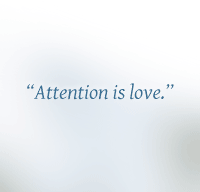
My husband gave me a new car. This is a gift of staggering dimension, and I’m only now, as they say, beginning to “wrap my mind around it.”
It was not a surprise. On Christmas morning he handed me a piece of paper with the picture of a car on it, the car he had determined was right for my needs: hauling all kinds of precious and ever-growing cargo. Then he spent several more months deliberating on the features that were the ones he thought I deserved.
My old car was doing fine, but at 12 years old, it could definitely be called old. I had driven it from Texas to California in 1997 and it symbolized the life I had left behind: a life of workaday grind, grief and stress, yet relative solitude and independent ease; a life without a child, a dog, a Brownie troop and Keebler crumbs. Mine was the kind of car that never fails, yet lately, when pressed to make a road trip, I felt better off renting some reliability.
When we arrived at the dealership, I could tell from the start that times had changed since the last time I bought a new car.
I remember the delivery process like this. You sit behind the wheel with the salesman beside you. He shows you the refined and slightly unfamiliar features of the dash: the windshield wipers, the gear shift, the lights, the stereo, the AC, the adjustable steering column, the cruise control, the CD changer (!), the remote side mirrors (!), the cupholders (!).
There was none of that.
Instead, we sat in the front seat and he began punching a touchscreen that occupies the center of the cockpit. As a car marketing professional, he must have sensed the slight quiver that was about to send my female eyeballs orbiting, because he said:
I’ll never buy another car without one of these.
Hmm, I thought, I’d better keep my opinions to myself.
His fingers were flying through maneuvers that I would never remember.
You can find the nearest Starbucks, for example.
Isn’t there one on every corner?
When you’re alone on the road this will lead you straight to the nearest Chinese restaurant.
If I’m ever again alone on the road I’m heading straight to China.
I’ve already programmed in your home address.
Can’t I just go back the way I came?
I considered it all harmless folly, even when he handed me the owner’s manuals. That’s right, two manuals. The manual for operating the car was 584 pages. The manual for operating the GPS system was 274 pages.
My husband sensed my trepidation and said, “Want to just follow me?”
And I did. Things went smoothly until he decided to try a shortcut. Then the map started scolding me, in that mildly sensual yet patronizing voice inherited from patriarchal computer forebears.
Right turn in one-quarter mile, she suggested.
Left turn in one hundred yards, she intoned.
Right turn ahead, she insisted.
Left turn ahead, she shrieked, and shot me in the head.
The commands elevated in urgency as the system rapidly reconfigured the route to accommodate my husband’s own innovative guidance choices one car ahead. Once we arrived home I was drenched in flop sweat and palpitating with fury.
I did not set my ass in that car again for one week.
Oh I know there’s plenty of gender psychology at work here, but I consider it all too obvious to mention.
Suffice it to say this may well be the car that I deserve, but I’m more convinced than ever that I don’t deserve it.
Honey, I said carefully to my husband one morning, I just don’t find myself getting lost that often.
Compassionately, he disabled the GPS and I’m getting used to driving again. I’ve located the radio. But I haven’t yet ventured toward the windshield wipers.
And I know in my gut what the lesson is. If I can overcome my aversion, if I can truly find my way around it, then I will finally be getting somewhere.













